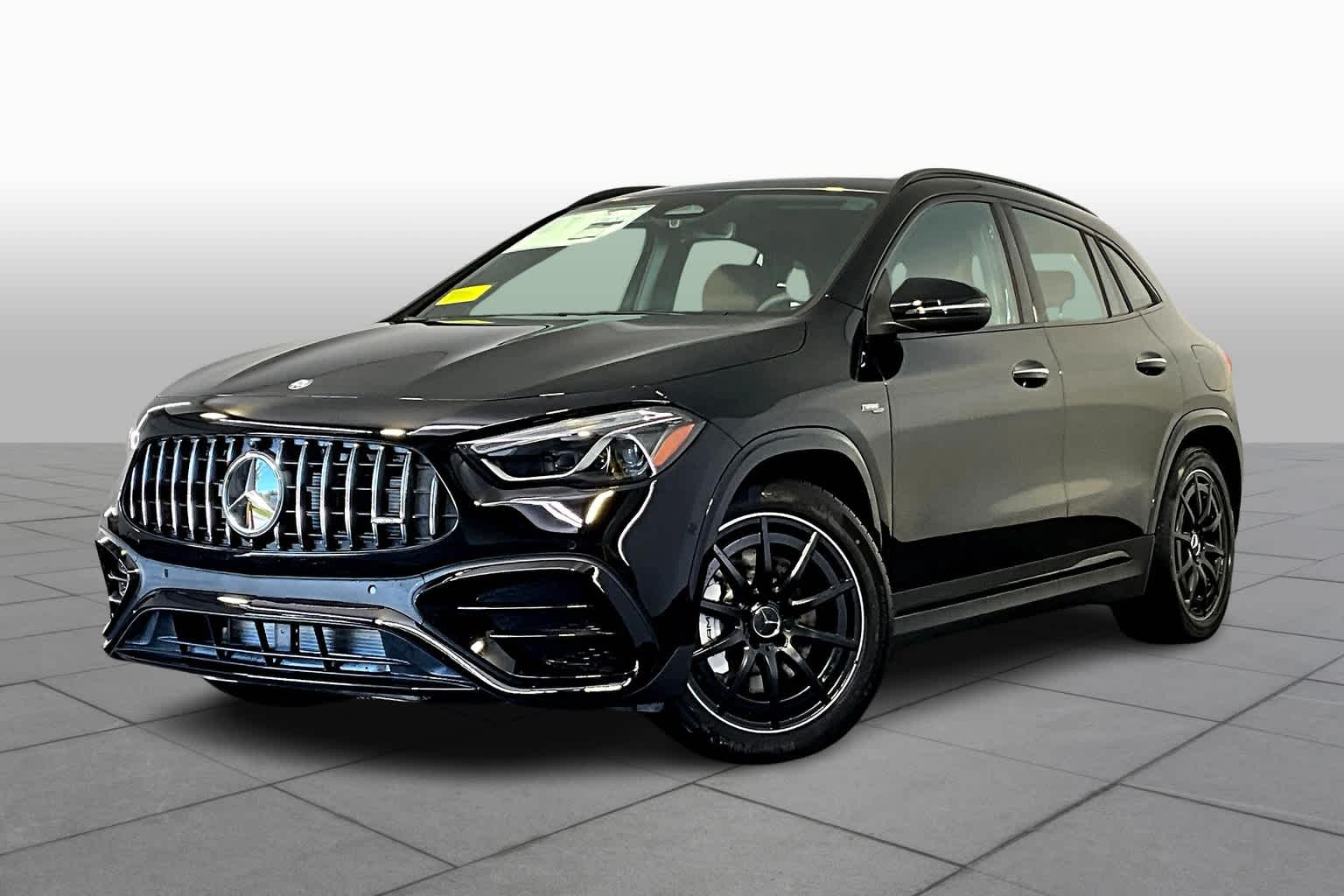When buying a vehicle, most people focus on upfront cost, monthly payments, fuel economy, or even tech features. But one often overlooked factor can have a huge impact on your wallet long after you drive off the lot—resale value.
A vehicle’s depreciation rate over five years determines how much value it retains and how much you lose if you decide to sell or trade it in. Some vehicles hold their value exceptionally well, making them smart long-term investments.
Others, despite high initial price tags or strong brand reputations, suffer steep depreciation—costing owners thousands when it’s time to move on.
In this guide, we explore both ends of the resale value spectrum. First, we spotlight five vehicles that consistently rank among the best in 5-year resale retention.
These models combine brand strength, reliability, and enduring market demand to maintain their value impressively over time.
Then, we shift focus to five vehicles with the worst resale value after five years—models that might look appealing new but lose their financial edge rapidly.
Whether you’re a first-time car buyer or a resale-savvy shopper, knowing how your vehicle performs in long-term value retention is crucial. Let’s begin with the vehicles that shine when it comes to holding their worth over time.
Table of Contents
Toggle5 Vehicles With Best 5-Year Resale Value
Depreciation is the silent cost of car ownership—one that can quietly erode your investment without you even realizing it.
While most vehicles lose value the moment they leave the dealership lot, some manage to retain a surprisingly high percentage of their original cost even after five years.
These are the models that offer more than just good looks or flashy features; they deliver long-term value through strong reliability, sustained demand, and reputations that withstand trends and market shifts.
In this section, we’re focusing on five standout vehicles that are known for their exceptional 5-year resale value.
These models consistently rank at the top of industry studies from sources like Kelley Blue Book and J.D. Power, which evaluate how well vehicles retain their worth over time.
From rugged trucks to practical SUVs and even a few performance-oriented entries, these vehicles combine functionality and dependability in ways that make them valuable to a wide range of second-hand buyers.
Why is this important? Because if you plan to trade in or sell your vehicle down the line, choosing one of these five options can mean thousands more in your pocket.
Resale value becomes especially important in an uncertain economy or when vehicle demand fluctuates. Even if you intend to keep your vehicle long-term, strong resale performance often correlates with better build quality, fewer issues, and higher owner satisfaction.
These vehicles don’t just represent smart buys—they represent smart ownership. Whether you’re looking for something utilitarian, family-friendly, or built for adventure, this list highlights the models that give you the best shot at preserving your investment over the long haul.
Let’s dive into the five vehicles with the best 5-year resale value and examine what makes them such solid performers in the long-term automotive marketplace. We’ll start with a truck that’s practically become synonymous with resale strength.
1. Toyota Tacoma – The Undisputed Resale Champion
The Toyota Tacoma is a legend in the midsize pickup segment—not just for its off-road chops and bulletproof reliability, but for its astonishing resale value.
Year after year, the Tacoma tops resale charts, often retaining over 60–70% of its original value after five years. That’s a rare feat in the automotive world and a key reason why it’s frequently recommended as a smart investment for budget-conscious truck buyers.
So what gives the Tacoma its staying power in the resale market? First, there’s Toyota’s long-standing reputation for dependability. The Tacoma is built to last, with many owners driving these trucks well past 200,000 miles with minimal issues.
That kind of track record inspires confidence in used buyers, who are often willing to pay a premium for a used vehicle they know will endure.
Second, the Tacoma appeals to a wide demographic. From contractors needing a work truck to outdoor adventurers craving trail-ready capability, the Tacoma’s versatility keeps it in demand across new and used markets.
Its off-road variants like the TRD Off-Road and TRD Pro further boost appeal, especially in regions where all-terrain performance is valued.
Another factor? Limited competition. The midsize truck segment doesn’t have as many consistently reliable players, giving the Tacoma an edge.
While newer rivals like the Ford Ranger or Chevrolet Colorado offer stiff competition on paper, neither has been able to match Toyota’s long-term durability or resale consistency.
Additionally, the Tacoma benefits from conservative evolution. Toyota rarely makes radical design changes, which means older models don’t feel outdated quickly.
Parts are widely available, and servicing the truck is relatively inexpensive compared to full-size alternatives. This makes ownership affordable, which only enhances its attractiveness to second-hand buyers.
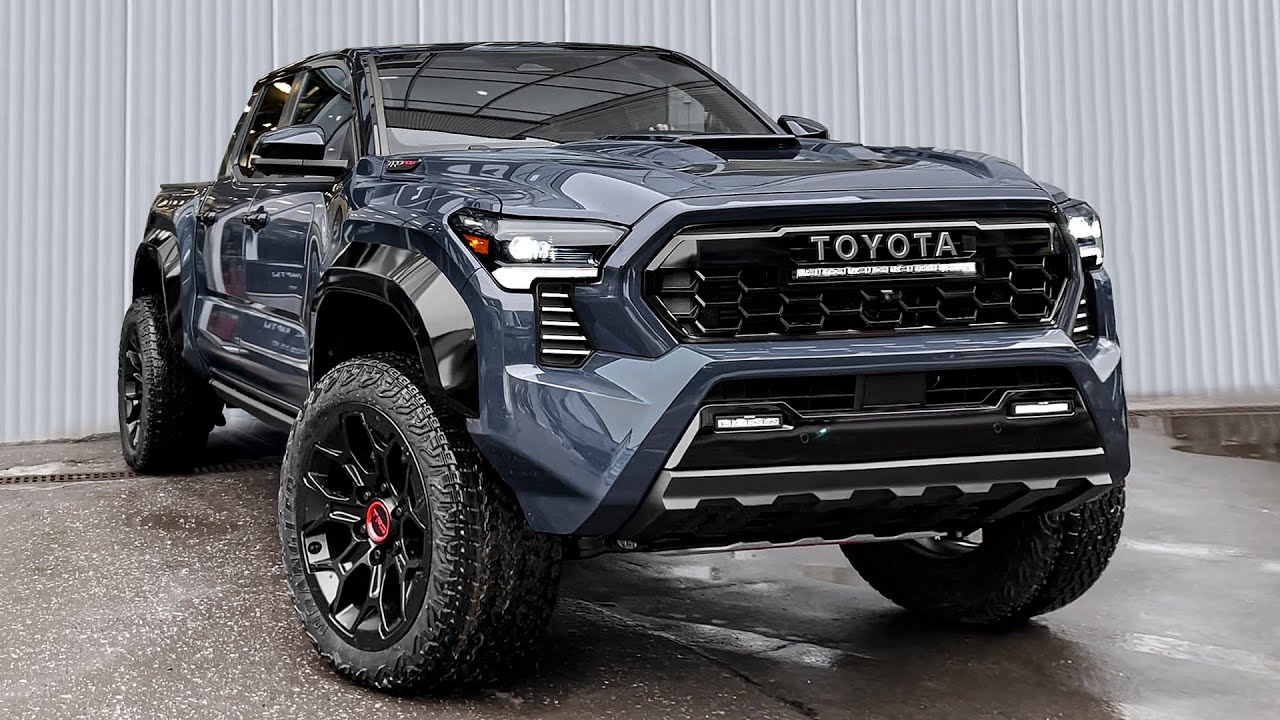
Even in markets where depreciation is steep, the Tacoma holds its value remarkably well. It’s not the flashiest or the most modern pickup, but it’s the one you’ll likely lose the least money on over five years.
For anyone looking at total cost of ownership—not just purchase price or fuel efficiency—the Toyota Tacoma is a textbook example of a smart buy. Up next, we look at an SUV that mirrors this same philosophy with equally impressive resale performance.
2. Toyota 4Runner – Rugged Reliability That Retains Value
The Toyota 4Runner is a midsize SUV that has built its reputation on toughness, simplicity, and go-anywhere capability.
While many modern SUVs have transitioned to car-like crossovers with unibody frames and complex tech, the 4Runner stays true to its truck-based roots—and that’s exactly why it maintains one of the best 5-year resale values in the industry, often retaining more than 65% of its original value.
One major factor contributing to the 4Runner’s resale strength is its body-on-frame construction.
This makes it especially durable for off-road use, towing, and harsh environments. Buyers looking for second-hand vehicles that can endure real-world abuse gravitate toward the 4Runner, keeping demand high and depreciation low.
Then there’s Toyota’s legendary reputation for reliability. The 4Runner shares many components with other proven Toyota platforms, including the Tacoma.
Its naturally aspirated V6 engine and old-school 5-speed automatic transmission may seem outdated on paper, but they’re prized for their simplicity and longevity.
Fewer electronic gimmicks mean fewer things to break down over time—and that’s a selling point used buyers truly value.
The 4Runner also benefits from strong brand loyalty and a devoted community. Whether you’re into overlanding, off-roading, or just need a vehicle that can handle rugged terrain, the 4Runner is a trusted name.
Special trims like the TRD Pro or Trail Edition only add to its resale appeal by offering extra capability and styling that hold their charm for years.
Unlike some newer SUVs that depreciate rapidly due to tech obsolescence, the 4Runner’s relatively unchanged design is a benefit.
Buyers aren’t put off by the fact that a used model from five years ago looks nearly identical to today’s offering—they actually appreciate that consistency.
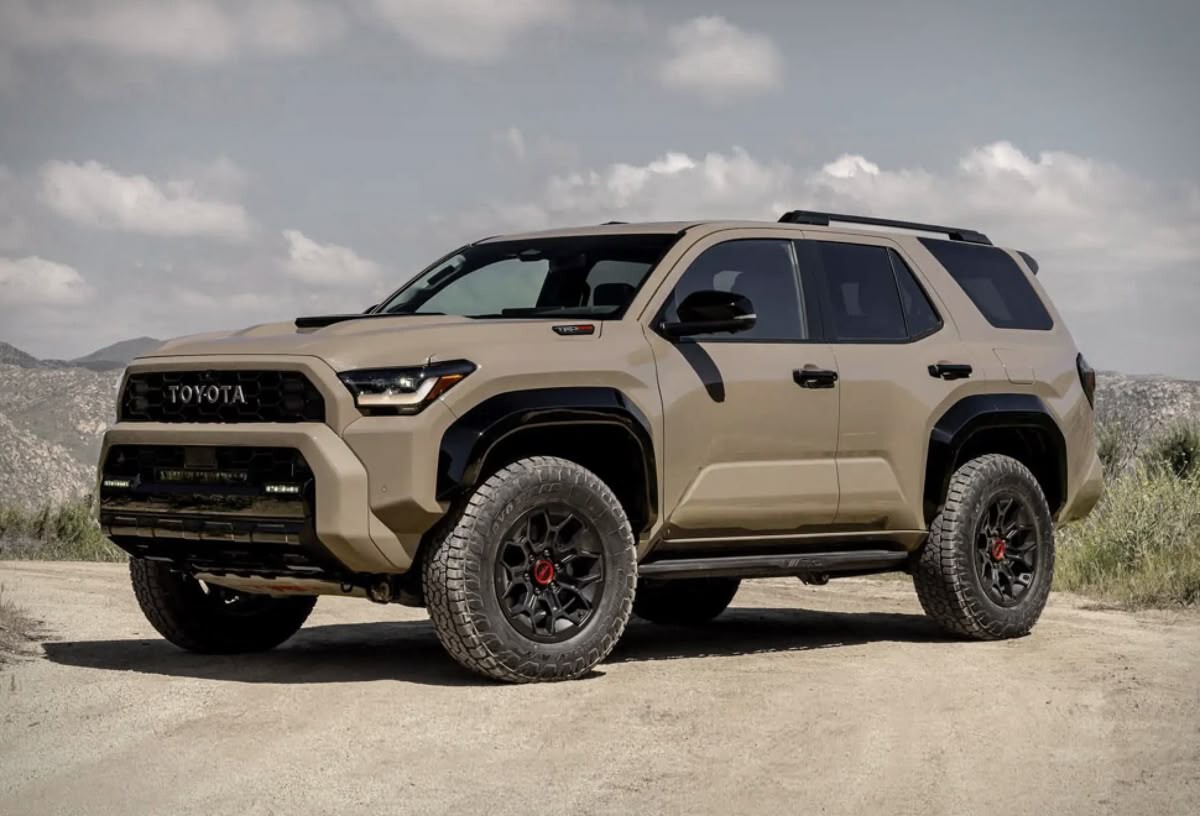
Parts availability and service familiarity also help keep repair costs manageable, which is another reason owners hold onto these vehicles for so long.
Ultimately, the Toyota 4Runner proves that sticking to the basics—reliability, utility, and proven performance—pays off, especially in resale value.
It may not offer cutting-edge tech, but for buyers focused on long-term value and real-world durability, few SUVs are as bankable.
Next, we examine a full-size pickup that consistently ranks near the top when it comes to value retention over five years.
3. Toyota Tundra – Full-Size Strength, Long-Term Value
The Toyota Tundra is often overshadowed by its American rivals in terms of sales numbers, but when it comes to 5-year resale value, this full-size pickup routinely outperforms the competition.
According to industry data from Kelley Blue Book and iSeeCars, the Tundra retains approximately 65% of its original value after five years, putting it at the top of the full-size truck category for value retention.
So what makes the Tundra a resale powerhouse? First and foremost, it’s Toyota’s signature reliability. The Tundra uses tried-and-true engineering—particularly in models equipped with the naturally aspirated 5.7-liter V8, which is renowned for its durability.
While newer trucks from Ford, Chevrolet, and Ram lean into turbocharging and electrification, the Tundra stuck to a simpler, less failure-prone formula until its recent redesign.
This older powertrain, while not the most fuel-efficient, has earned a cult-like following among owners who value long-term dependability.
Additionally, Tundra’s low maintenance costs and resistance to major mechanical issues make it a favorite in the used market. Its components are overbuilt and proven in harsh environments, including construction sites, rural farms, and off-road trails.
That reputation for resilience keeps used prices high, especially for models in good condition with service records.
Another factor driving resale value is limited fleet usage. Unlike many domestic trucks that flood the used market after lease and fleet cycles, Tundras are typically sold to private buyers who keep them longer. That scarcity supports strong demand and prices on the used lot.
The Tundra also offers an excellent balance between utility and comfort. Higher trims like the Limited or Platinum provide leather interiors, premium sound systems, and advanced towing tech, making them attractive to secondhand buyers who want full-size functionality with luxury features.
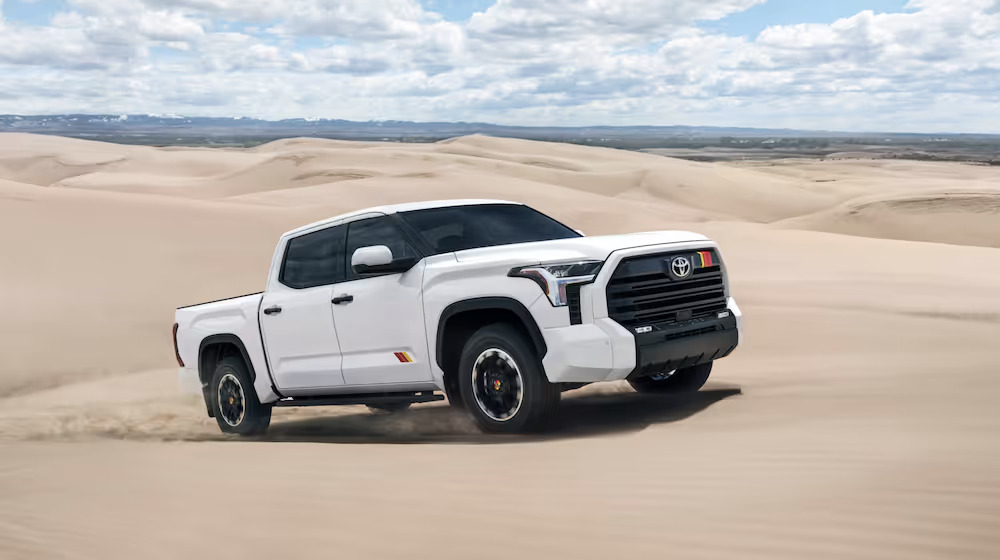
Even the older design—before the recent refresh—works in its favor. Like the 4Runner, the Tundra hasn’t changed radically over the years, so a well-maintained five-year-old model doesn’t feel outdated. Its straightforward design, both inside and out, makes it easier to own and maintain long-term.
In the full-size truck world, where heavy depreciation is common, the Toyota Tundra stands out for its ability to deliver strength and stay valuable—long after its first trip off the lot.
Next, we look at an SUV that combines premium appeal with class-leading resale retention.
4. Porsche 911 – Luxury Sports Car with Unmatched Resale Value
The Porsche 911 may not be the first name that comes to mind when thinking of resale value, but in the luxury sports car world—and even beyond—it’s a standout.
Unlike most high-end vehicles that suffer heavy depreciation in the first few years, the 911 retains an astonishing 60–65% of its value after five years, often even more for certain trims or limited editions. It’s one of the rare luxury performance cars that is both a thrill to own and a smart investment.
One of the biggest reasons the 911 holds its value so well is Porsche’s engineering philosophy. Each generation evolves subtly rather than dramatically, preserving the car’s iconic design and keeping older models relevant.
That continuity means a well-maintained five-year-old 911 still looks and performs like a modern sports car. Porsche also ensures parts compatibility across many years, making older models easier to maintain.
Then there’s the brand prestige. The 911 is considered a benchmark for performance and craftsmanship.
It has a loyal global fanbase, and demand for used 911s often outpaces supply—especially for manual transmission variants or limited-run editions like the GTS or Turbo S. Collectors and driving purists alike look to the used market for well-kept models, pushing up resale prices.
Additionally, the 911 enjoys a reputation for reliability that’s unusual in the luxury sports car segment.
While maintenance isn’t cheap, Porsche’s attention to long-term quality means owners rarely face catastrophic issues. Routine upkeep and proper servicing go a long way in preserving both the car and its value.
Depreciation is also mitigated by limited production and customization options. With fewer units on the road and each car tailored to individual taste, used 911s become highly desirable, especially in the secondhand enthusiast community.
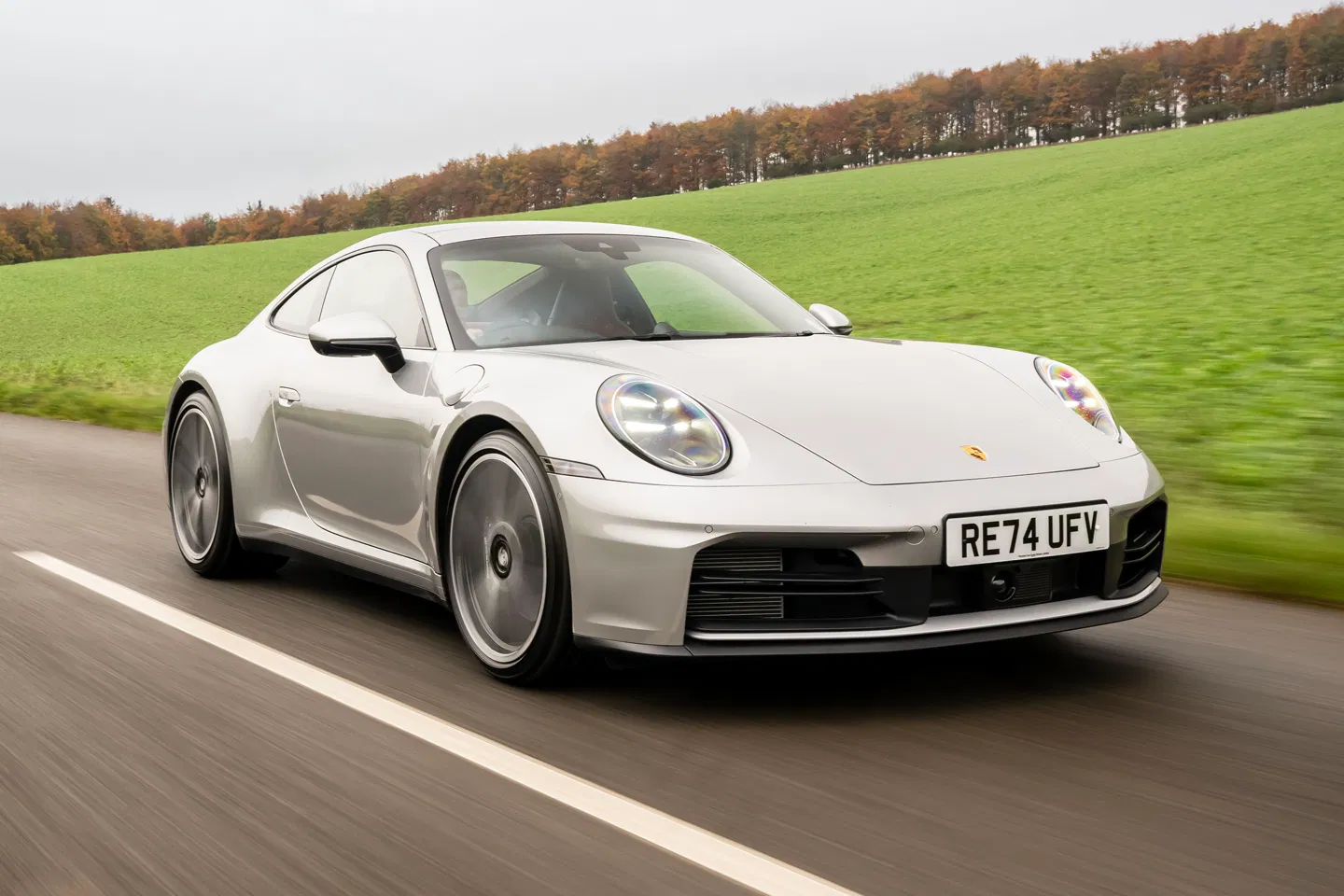
Porsche’s certified pre-owned (CPO) program also strengthens resale numbers by increasing buyer confidence.
Even in markets flooded with luxury vehicles, the 911 stands out as a resale gem. It’s not just a weekend toy or a status symbol—it’s an investment that continues to deliver, both emotionally and financially, well into ownership.
For our final entry in the best resale category, we’ll explore a practical compact SUV that proves everyday utility can also come with strong long-term value.
5. Subaru Crosstrek – Compact Utility with Impressive Value Retention
The Subaru Crosstrek might not scream performance or luxury, but it quietly dominates the resale value conversation in the compact SUV segment.
Thanks to its rugged charm, standard all-wheel drive, and trusted reliability, the Crosstrek regularly retains over 60% of its value after five years, making it one of the best long-term ownership bets in its class.
What makes the Crosstrek stand out? First, it hits a sweet spot in the market: affordable, practical, and adventure-ready.
Buyers see it as a Swiss Army knife of a vehicle—capable of handling daily commutes, weekend getaways, light off-roading, and harsh weather with equal ease. This wide-ranging appeal helps it maintain high demand in the used market, especially in regions with challenging terrain or snowy climates.
Another major contributor is Subaru’s brand reputation. Known for durability, safety, and owner satisfaction, Subaru vehicles consistently top long-term reliability surveys.
The Crosstrek shares its mechanical underpinnings with the Impreza hatchback but adds extra ground clearance and rugged styling, making it a favorite among young drivers, small families, and outdoor enthusiasts.
Low cost of ownership is another factor. The Crosstrek delivers excellent fuel economy and requires relatively inexpensive maintenance.
Its naturally aspirated engine and straightforward engineering mean fewer surprises as the miles add up. Even the hybrid variant maintains strong resale figures, thanks to Subaru’s consistent reliability.
Resale value is further supported by strong resale demand among private buyers and dealers alike. Used Crosstreks often sell quickly, with minimal markdowns, especially if they’re well-maintained and have service records.
Subaru’s symmetrical all-wheel-drive system also adds long-term value, as buyers associate it with safety and traction without a significant fuel penalty.
Additionally, Crosstrek models don’t become outdated rapidly. Subaru’s evolutionary design language means a five-year-old Crosstrek still feels current.
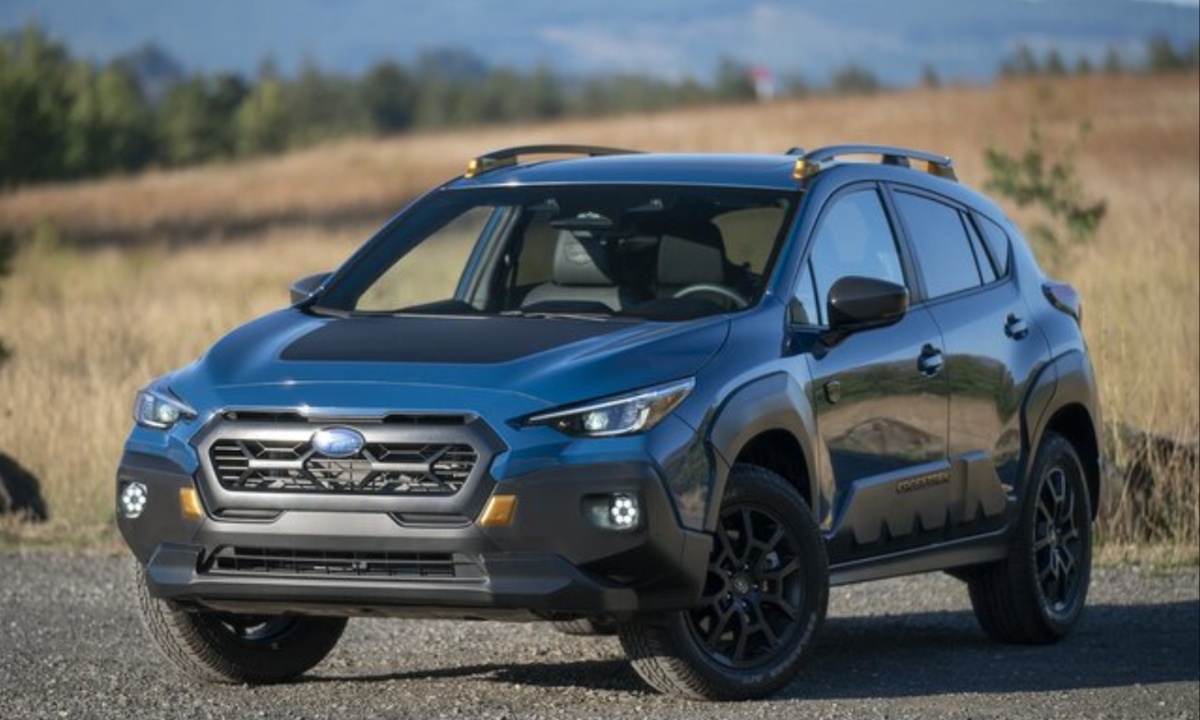
Buyers get modern safety features like adaptive cruise control and lane keeping, even in slightly older trims, helping used versions stay competitive.
In a crowded segment filled with rapid depreciation, the Subaru Crosstrek proves that practical, reliable design can lead to strong financial returns.
Whether you’re reselling it after five years or trading it in for your next adventure vehicle, the Crosstrek holds its value exceptionally well.
Next, we’ll turn to the other side of the spectrum—vehicles that unfortunately lose a significant portion of their value within five years. Let’s explore why.
5 Vehicles With Worst 5-Year Resale Value
Not all cars are created equal when it comes to resale value—and some lose their worth far more quickly than buyers expect.
While flashy styling, new tech, or generous incentives might draw you into a showroom, these same factors can often lead to steep depreciation once the new-car smell fades.
In fact, some vehicles lose over 50–60% of their original value within just five years, turning what seemed like a good deal into a major financial setback.
In this section, we examine five vehicles that suffer from the worst 5-year resale value. These aren’t necessarily bad vehicles in terms of quality or performance—but they’re simply not strong at holding their value over time.
Rapid model updates, declining demand, expensive repairs, brand perception, or poor long-term reliability all contribute to these depreciation traps. In many cases, even a high sticker price doesn’t protect against resale losses.
Why does this matter to you as a car buyer? Because depreciation is the largest cost of ownership—more than fuel, insurance, or even maintenance. Buying a vehicle that quickly loses value can mean thousands of dollars lost if you decide to sell, trade in, or refinance before the loan is paid off.
While some buyers lease and avoid long-term ownership, others unknowingly commit to vehicles that won’t return even half of their value five years later. Knowing which models have the steepest decline can help you make smarter, more financially sound decisions.
In this part of the guide, we’ll break down five vehicles that routinely rank among the lowest for resale value.
We’ll explore what’s behind their rapid depreciation and offer insights into what to watch for if you’re considering one. Some are surprising. Others, not so much. But all are worth knowing—especially if you care about your wallet five years from now.
Let’s start with a luxury sedan that loses value faster than nearly any other in its class.
1. BMW 7 Series – Luxury That Quickly Loses Its Luster
The BMW 7 Series stands as a technological marvel—packed with cutting-edge features, powerful engines, and opulent interiors. Yet despite all its engineering brilliance, the 7 Series is one of the worst performers when it comes to 5-year resale value.
On average, it retains less than 40% of its original MSRP after five years, making it a striking example of how prestige doesn’t always equal long-term financial sense.
Why does a flagship luxury sedan like the 7 Series depreciate so rapidly? One major reason is the sheer pace of innovation in this segment. Luxury buyers expect the latest tech, and BMW delivers—often to the point where a five-year-old model can feel out of date.
Features like gesture controls, massive touchscreens, advanced semi-autonomous systems, and air suspension may wow new buyers, but they also add complexity and long-term maintenance costs that deter used buyers.
Another factor is cost of ownership. Repairs and maintenance on a 7 Series can be prohibitively expensive once the factory warranty expires.
Even routine upkeep is pricier than average, and issues with electronic systems or engine components often require specialist attention. These costs scare off secondhand buyers, who might instead opt for more manageable used luxury alternatives.
Then there’s overproduction and leasing saturation. A high percentage of new 7 Series models are leased, which floods the used market when those leases expire—driving down resale prices due to oversupply. With plenty of units available and limited buyer demand for large sedans, prices plummet quickly.
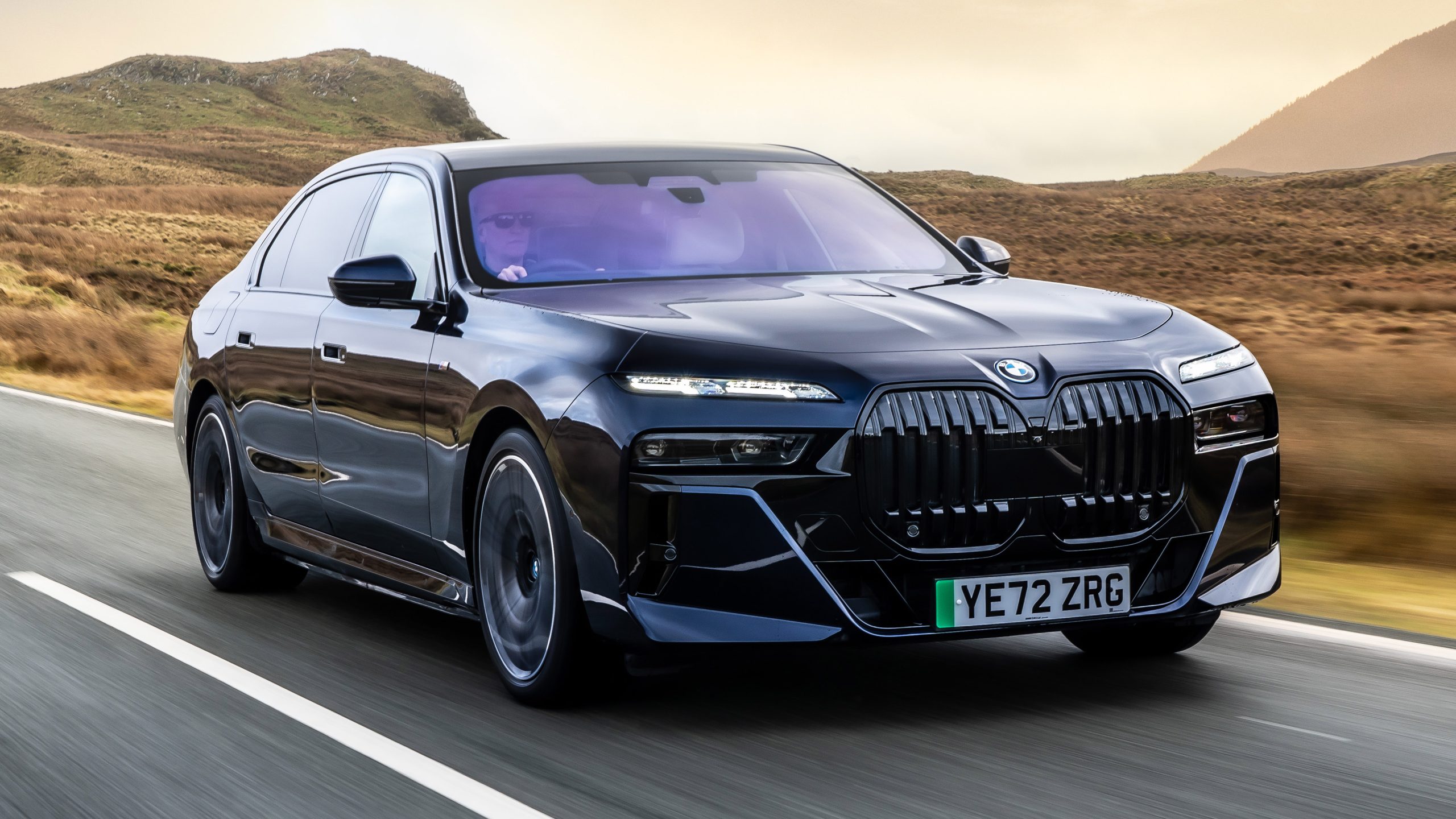
Even BMW’s own design strategy contributes to depreciation. The frequent refreshes and major redesigns (like the bold grille of recent models) make older versions look outdated fast. For a vehicle that initially costs well over $85,000, such aggressive styling updates can cause resale havoc.
Despite its comfort and performance, the 7 Series is a financial liability if you’re thinking long-term. Unless you’re leasing or getting a deep discount on a used model, it’s a car that will likely cost you far more than you expect—especially when it comes time to sell or trade in.
Next, we move to a luxury electric vehicle that promised the future—but ended up sinking fast in resale value.
2. Jaguar I-PACE – Electric Innovation, Rapid Depreciation
The Jaguar I-PACE launched with high hopes as the British marque’s first fully electric vehicle. It arrived in 2019 to critical acclaim, winning numerous “Car of the Year” awards and praised for its sharp design, engaging handling, and luxury interior.
Yet despite its early momentum, the I-PACE has become one of the worst depreciating electric vehicles on the market, retaining just around 35–40% of its original value after five years.
So, what went wrong?
First, the electric vehicle (EV) market moves quickly, and the I-PACE has struggled to keep up. Competing EVs from Tesla, Ford, Hyundai, and BMW have surpassed it in terms of range, charging speed, and technology.
While the I-PACE offers a respectable 234-mile EPA range, that figure quickly feels outdated when rivals like the Tesla Model Y or Hyundai IONIQ 5 deliver better range for less money.
Tech-conscious EV buyers typically want the latest advancements, and the I-PACE’s stagnation in updates makes it less appealing over time.
Another issue is Jaguar’s limited charging network support and brand footprint in the EV ecosystem.
Unlike Tesla, which offers its own Supercharger network, Jaguar relies solely on third-party charging infrastructure—an area where many I-PACE buyers have faced inconsistent charging speeds and limited availability. This has led to frustration and a reputation problem that hurts secondhand appeal.
Maintenance and long-term reliability concerns are also playing a role. Jaguar’s service costs are higher than most mainstream brands, and buyers worry about potential battery degradation and the lack of extensive dealer support for EV-specific issues.
These fears depress resale value, especially in a segment where confidence in long-term reliability is still building.
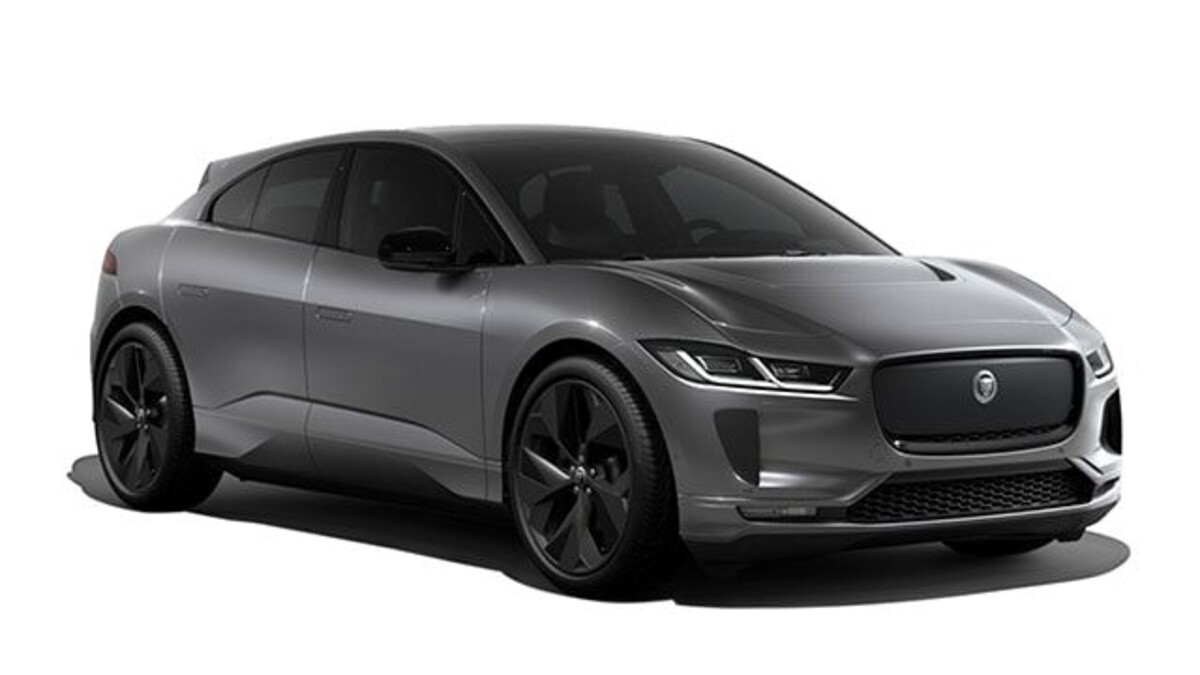
Moreover, Jaguar’s brand, while premium, doesn’t carry the same EV prestige or resale power as Tesla or even Porsche. The I-PACE may be stylish and luxurious, but that alone isn’t enough to hold value in such a tech-forward, rapidly evolving market.
All of this combines to make the I-PACE a steeply depreciating asset. For new buyers, steep discounts and incentives may help soften the blow.
But for owners hoping to trade in or sell after a few years, the I-PACE proves that early acclaim doesn’t always translate into long-term value.
Next up, we examine a luxury crossover that depreciates even faster than some exotic sports cars.
3. Infiniti QX80 – Big Luxury, Bigger Depreciation
The Infiniti QX80 is a full-size luxury SUV that offers bold styling, a powerful V8 engine, and spacious three-row seating. On paper, it checks many of the right boxes for buyers seeking upscale family transport.
But when it comes to five-year resale value, the QX80 is a major letdown—typically retaining only around 40% or less of its original price. Among luxury SUVs, it consistently ranks as one of the worst for long-term value retention.
So why does such a feature-rich vehicle depreciate so severely?
One major reason is the outdated platform and design. The QX80 has been riding on essentially the same underpinnings since 2010, with only minor cosmetic and tech updates along the way.
In a market where rivals like the BMW X7, Cadillac Escalade, and Lincoln Navigator are rapidly innovating with new designs and advanced infotainment, the QX80 feels behind the curve. This lack of evolution dampens demand on the used market, causing prices to slide quickly.
Another key factor is poor fuel economy. With its 5.6-liter V8, the QX80 averages just 14–16 mpg combined—numbers that hurt its appeal as gas prices fluctuate.
Used buyers are increasingly prioritizing efficiency, even in large SUVs, and the QX80 simply doesn’t meet those expectations. This drives down demand and, in turn, resale value.
Brand perception plays a role, too. While Infiniti is technically a luxury brand, it doesn’t carry the same cachet as Mercedes-Benz, Lexus, or Audi.
Buyers shopping in the high-end SUV space often lean toward brands with stronger reputations for luxury, technology, and resale value. Infiniti’s dwindling market presence and lack of recent innovation hurt its desirability, particularly in the secondhand market.
Additionally, the QX80’s resale is dragged down by incentives and leasing. Infiniti often offers deep discounts and aggressive lease terms to move inventory. That leads to large volumes of off-lease vehicles hitting the used market simultaneously—flooding supply and lowering resale prices.
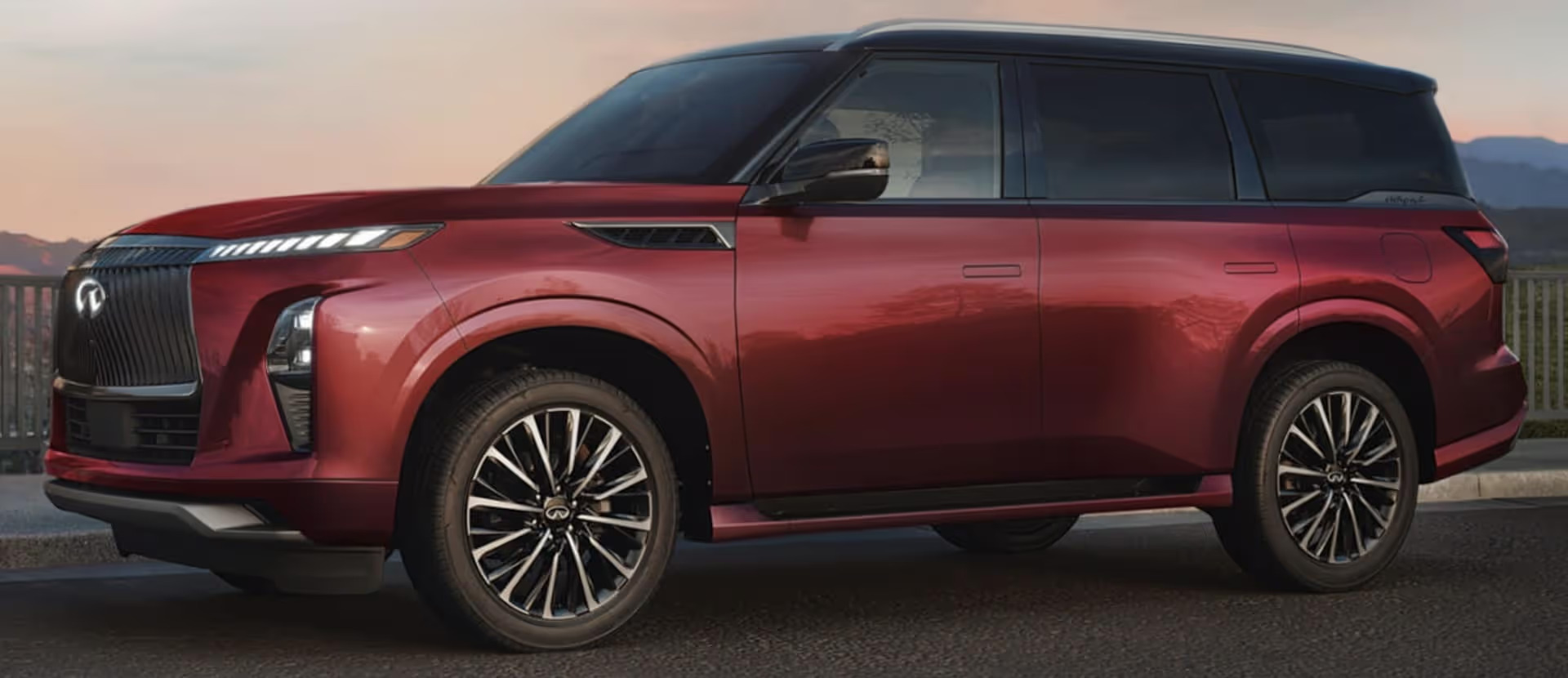
While the QX80 does offer strong towing capability, plush materials, and lots of interior room, its aging design, poor efficiency, and soft brand appeal ensure that its value drops sharply over time.
Next, we’ll look at a popular midsize sedan that’s affordable upfront but loses its shine—and value—very quickly.
4. Nissan Altima – Midsize Sedan, Massive Depreciation
The Nissan Altima has long been a familiar name in the midsize sedan market, offering affordability, decent fuel efficiency, and comfort. It’s a common choice for daily drivers and fleets alike.
However, despite its practical nature and competitive starting price, the Altima is notorious for steep depreciation, retaining only about 40–45% of its value after five years. Among mainstream sedans, it remains one of the most heavily discounted models on the used market.
One of the core reasons behind this depreciation is over-saturation. The Altima has been a staple in rental fleets and corporate leases, which has led to a flood of lightly used models entering the resale market.
When supply significantly outpaces demand, prices drop—regardless of the vehicle’s condition. For private owners, that means lower trade-in values and tougher competition when trying to sell.
The Altima also suffers from a lack of brand differentiation. While competitors like the Toyota Camry and Honda Accord have carved out reputations for long-term reliability and resale strength, the Altima is often viewed as average at best in these categories.
Its resale suffers because it doesn’t stand out in terms of engineering, longevity, or desirability.
Another hit to its resale value is the CVT transmission, which has a reputation for inconsistent performance and questionable durability over time.
Although Nissan has made improvements in newer models, the long-standing concerns about CVT reliability continue to affect buyer confidence—especially in the used market.
Further impacting the Altima’s long-term value is the rapid pace of interior and tech upgrades across the industry.
As newer vehicles offer larger screens, better connectivity, and more advanced driver-assist features, older Altimas—particularly base trims—begin to feel outdated quickly, reducing their appeal on resale lots.
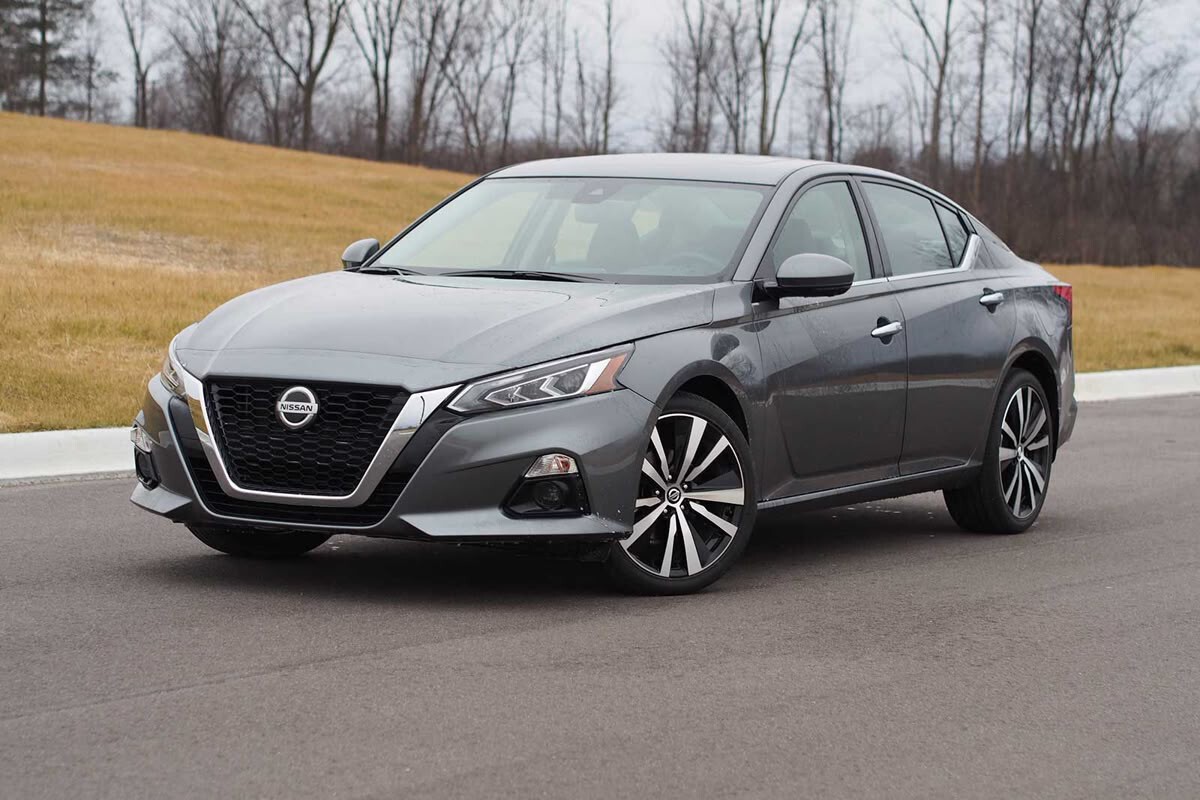
Even safety ratings and fuel economy, while decent, aren’t class-leading, giving buyers fewer reasons to pay a premium for a used Altima over a rival. And since incentives are often used to push new Altima sales, this further erodes the perceived value of older models.
Overall, while the Nissan Altima may seem like a good deal up front, its heavy depreciation makes it a risky buy for those planning long-term ownership.
Finally, we turn to a luxury brand’s compact SUV that underperforms in value despite a premium badge.
5. Mercedes-Benz GLA – Entry-Level Luxury, Exit-Level Resale
The Mercedes-Benz GLA is often seen as an accessible entry into the luxury SUV world, offering the allure of the three-pointed star at a relatively modest price point.
But while it may carry premium badging and styling, the GLA is also one of the worst performers in five-year resale value, typically retaining just 35–40% of its original cost. For a luxury vehicle, this is a stark depreciation rate—and it’s one many buyers don’t anticipate.
One of the primary reasons for the GLA’s rapid value loss is its entry-level status within the Mercedes-Benz lineup.
Buyers in the used luxury market often seek more substantial models—like the GLC or GLE—leaving the GLA with less demand and more competition from non-luxury rivals offering better space, features, or performance for the price.
Interior quality and ride refinement are also contributing factors. While newer models have improved, earlier GLAs often drew criticism for firm suspensions, tight rear seating, and a cabin experience that didn’t quite live up to luxury expectations.
These shortcomings become more noticeable as the vehicle ages, pushing used buyers toward better-appointed alternatives.
Additionally, ownership costs hurt the GLA’s appeal in the secondhand market. Despite its smaller footprint, it still requires premium fuel, carries luxury-brand service costs, and includes complex electronics that can be expensive to diagnose and repair.
For budget-conscious used buyers, this can be a deterrent—especially when vehicles from Honda, Mazda, or Subaru offer better long-term value and lower upkeep costs.
Then there’s the high volume of leasing, which plays a significant role. Many GLAs are leased and returned within three years, creating a surplus of used models that drives down resale pricing.
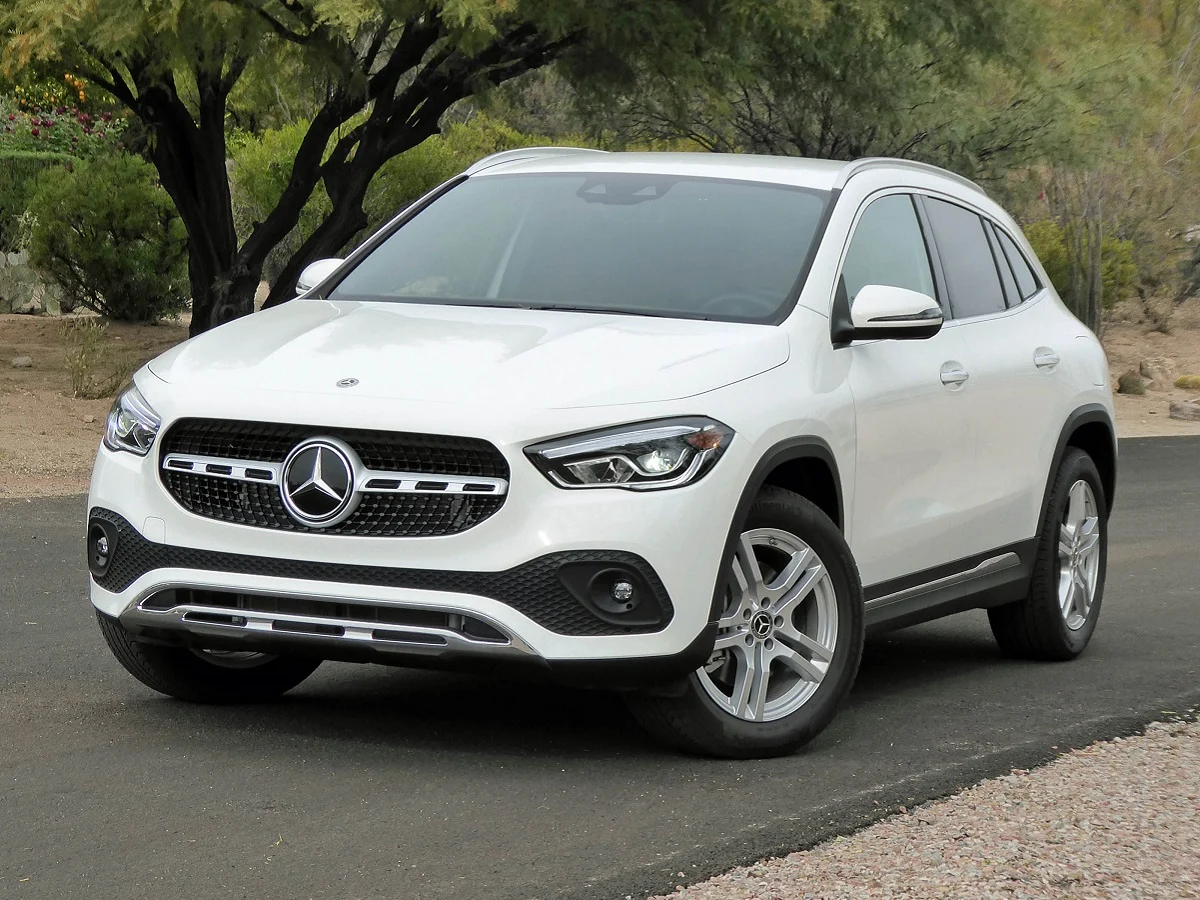
Combined with frequent redesigns and tech updates, older GLAs quickly lose their luster, especially if they lack features like updated infotainment or driver-assistance systems.
Even among Mercedes models, the GLA is one of the most heavily discounted vehicles on the resale market. Despite its badge, it struggles to hold its value due to a combination of underwhelming performance, cramped space, and expensive long-term care.
In summary, while the GLA may provide a low-cost gateway to luxury SUV ownership, it comes with a steep price later—making it a tough recommendation for buyers focused on value retention.
Also Read: 5 Pickups With Largest Beds And 5 With Smallest Beds

